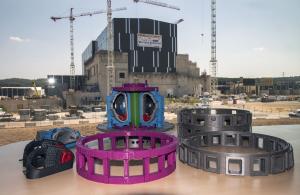Newsline readers have been following with keen interest as ITER's supersized components have been navigating the seas and reinforced roadways en route to the ITER site. Fusion enthusiasts, the tech-geek maker community, and educators routinely send requests for ideas and materials to assist in explaining the complexities of the ITER machine to students and public audiences.
Responding to these requests, the ITER Communication team worked with Tamás Szabolics and Dénes Oravecz from the Centre for Energy Research (Eötvös Loránd Research Network), who used ITER's computer CAD drawings to create a simplified model suitable for 3D printing. The model will allow users to print out each major component, to explain the functions of the various magnet systems, and to follow along with ITER's assembly over the coming years.
See these resources for complete instructions:
* A complete user guide for the 3D printing of the ITER Tokamak model v2.0 will be available soon. It will include detailed instructions, links to recommended software, and contact information for additional help.
* The 3D print files (v2.0) can be found
here (
updated February 2022).
* The recommended selection of plastic filaments can be found
here.
* Print time estimations for each model can be found
here.
* For a photographic record of what your printed components should look like, see
this gallery.
* A video showing the use of the model can be seen
here.


